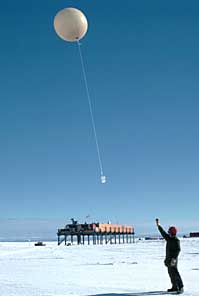 |
| Starting Climate Survey Since the 1950s (Photo: BBC) |
The report by the Climate Change Science Program (CCSP), a federal climate project in the United States, states, “what has occurred over the past 50 years cannot be explained by natural phenomena.”
CCSP found evidence of rising temperatures both in the lower atmosphere and on the earth’s surface. However, researchers indicated that better data is needed.
Surveys conducted many years ago showed that lower atmospheric temperatures did not increase, even though there was evidence of rising surface temperatures.
This contradicts what is commonly understood about the atmosphere, leading some scientists in the field to express skepticism.
The new report, “Trends in Lower Atmospheric Temperatures,” reexamines atmospheric data and concludes that temperatures in the lower atmosphere have indeed increased.
According to the authors of the report, the impact of human activities on global climate is evident.
Data Still Lacking
However, more data is needed to clarify certain points.
Generally, lower atmospheric temperatures have risen by 0.10 to 0.20 degrees Celsius every decade since 1979, when more data became available from satellites.
Yet, this presents a significant gap according to the report, “It is unclear whether the lower atmosphere is warming more or less than the earth’s surface.”
Mr. Peter Thorne, from the UK Meteorological Office, who contributed to the report, stated, “We do not study the atmosphere solely to understand temperature.”
Mr. Fred Singer, a prominent expert in the field, continues to argue that there is no evidence of human-induced climate change.
“The data in the report is generally good,” he said, “The issue is that they arrive at conclusions that do not align with what the data suggests.”
Measuring Atmospheric Temperatures is Challenging
Satellites record temperatures from their orbits around the earth but cannot measure at various altitudes.
The instruments used to measure temperatures on satellites are also aging, which affects the results, especially as the satellites become less synchronized over time.
In the case of measuring temperatures with balloons, while they can capture actual temperatures at varying altitudes as they ascend, they often lose the instruments, making them unrecoverable.
Therefore, adjusting the data is a complex task that requires significant time.
The report recommends enhancing infrastructure to collect accurate data to address unresolved issues.


















































